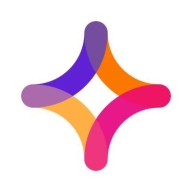

Jitterbit Harmony and Flowgear compete in the integration platform category aimed at simplifying API management. Jitterbit Harmony seems to have the upper hand with an intuitive platform structure and strong community support, while Flowgear offers flexibility and adaptability tailored to specific project needs.
Features: Jitterbit Harmony provides an easy-to-use interface, a comprehensive library of pre-built templates, and quick data mapping with minimal coding required. Flowgear offers a flexible integration framework, real-time processing, and seamless upgrades of integration points.
Room for Improvement: Jitterbit Harmony could enhance its customization options and expand its real-time processing capabilities. Additionally, improving the onboarding process with more comprehensive training materials would be beneficial. Flowgear may improve by streamlining user interface navigation, expanding pre-built templates, and offering more predictable pricing structures.
Ease of Deployment and Customer Service: Jitterbit Harmony facilitates rapid deployment through cloud solutions with extensive support services. Flowgear emphasizes streamlined cloud-based deployment and offers personalized support options tailored to specific needs.
Pricing and ROI: Jitterbit Harmony involves a moderate upfront investment focused on delivering long-term returns through increased efficiency, offering predictable budgeting. Flowgear provides a lower initial cost model with a flexible pricing structure, delivering quick returns and appealing particularly to startups and smaller businesses.


Flowgear enables companies of all sizes to increase efficiency and reduce cost by integrating their apps, services, API’s and databases. No coding with 200+ pre-built connectors, reusable workflows and APIs.
Jitterbit Harmony is a comprehensive platform for data integration and API management, enabling seamless synchronization and automation across cloud-based and on-premises applications.
Users leverage Jitterbit Harmony to integrate systems like ERP and CRM applications, simplifying complex data workflows and enhancing automation. It supports efficient data migration and ensures smooth connectivity, handling diverse integration needs and helping streamline business processes. Users emphasize its drag-and-drop functionality and extensive templates, which contribute to its robust performance. However, improvements are needed in data mapping, error message clarity, and documentation, especially when dealing with large data volumes.
What are the key features of Jitterbit Harmony?Companies across retail, manufacturing, healthcare, and finance sectors use Jitterbit Harmony to integrate critical applications and automate workflows. In retail, it connects inventory systems with sales platforms, reducing manual effort. Manufacturers sync their ERP systems with supply chain software, optimizing operations. Healthcare organizations integrate patient management systems with insurance databases, streamlining patient care. Financial institutions use it to connect accounting software with banking systems, ensuring real-time financial data exchange.
We monitor all Integration Platform as a Service (iPaaS) reviews to prevent fraudulent reviews and keep review quality high. We do not post reviews by company employees or direct competitors. We validate each review for authenticity via cross-reference with LinkedIn, and personal follow-up with the reviewer when necessary.